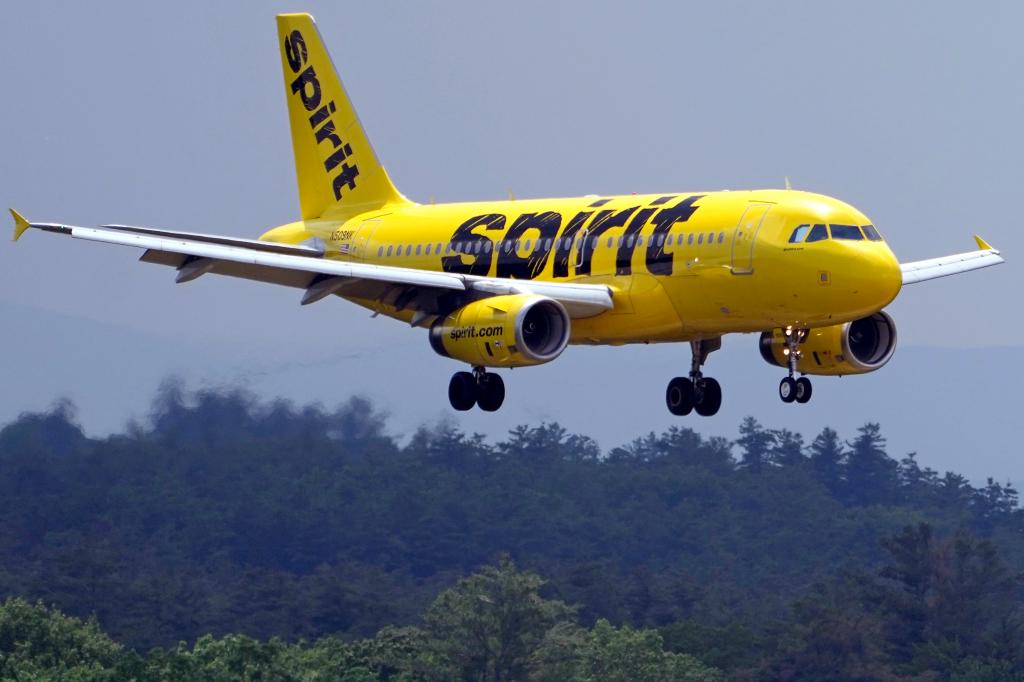Spirit Airlines’ Turbulent Journey: Second Bankruptcy Filing in a Year
Spirit Airlines, the recognizable ultra-low-cost carrier with bright yellow jets, has filed for Chapter 11 bankruptcy protection for the second time this year, marking a significant setback in its attempts to regain financial stability. Despite emerging from its previous bankruptcy reorganization just eight months ago in March, the airline has been unable to overcome mounting losses and dwindling cash reserves. The company has assured customers that flights, ticket sales, reservations, and operations will continue normally during this restructuring process, attempting to minimize disruption for travelers who rely on its budget-friendly options. CEO Dave Davis acknowledged the gravity of the situation, noting that “since emerging from our previous restructuring, which was targeted exclusively on reducing Spirit’s funded debt and raising equity capital, it has become clear that there is much more work to be done and many more tools are available to best position Spirit for the future.” This second filing suggests a more comprehensive approach may be needed to address the airline’s fundamental business challenges.
The airline’s financial troubles reflect broader shifts in the travel industry that have challenged the ultra-low-cost carrier model that once made Spirit successful. Following the pandemic, consumer preferences evolved significantly toward more premium travel experiences, forcing Spirit to attempt rebranding as a more upscale option to keep pace with changing market demands. However, this transition proved difficult as the airline simultaneously faced operational challenges that undermined customer confidence. Additionally, economic uncertainty stemming from President Trump’s proposed tariffs and budget cuts has further cooled consumer spending and driven down domestic airfares, creating an even more challenging environment for the struggling carrier. Earlier this month, the company was forced to raise going-concern doubts about its future, signaling to investors and customers alike that its financial situation had become increasingly precarious.
Spirit Airlines’ current predicament represents the culmination of several years of compounding difficulties. The Florida-based carrier posted a staggering $1.2 billion net loss last year, with its troubles significantly worsened by the collapse of a proposed $3.8 billion merger with JetBlue Airways that would have provided a potential lifeline. Technical issues with RTX’s Pratt & Whitney engines forced the airline to ground many of its Airbus jets, further constraining its operational capacity and revenue generation. These challenges came on top of already difficult market conditions, creating a perfect storm that the airline’s previous bankruptcy reorganization—focused primarily on debt reduction and capital raising—proved insufficient to address. The company’s first bankruptcy filing in November of last year had already made it the first major U.S. carrier to seek such protection since 2011, highlighting the exceptional nature of its struggles compared to industry peers.
The airline’s journey from its humble beginnings to its current predicament reflects the volatile nature of the aviation industry. Spirit began operations in 1964 not as an airline but as a long-haul trucking company, only pivoting to aviation in the 1980s when it started flying leisure packages under the name Charter One Airlines. The company rebranded as Spirit in 1992 and gradually built its reputation as a no-frills discount carrier catering to budget-conscious travelers who were willing to forgo extras like checked bags, seat assignments, and complimentary beverages in exchange for rock-bottom fares. This business model proved successful for many years, allowing Spirit to carve out a distinctive niche in the competitive airline market and expand its operations across the United States and into parts of Latin America and the Caribbean. The bright yellow planes became synonymous with affordable travel, particularly appealing to leisure travelers and those visiting friends and relatives who prioritized price over comfort.
However, the COVID-19 pandemic fundamentally altered the travel landscape in ways that have proven particularly challenging for ultra-low-cost carriers like Spirit. As travel resumed following the height of the pandemic, consumer preferences shifted notably toward more comfortable, experience-driven travel options. Many travelers, having been unable to fly during lockdowns, emerged with changed priorities and increased willingness to pay for better service and amenities. This shift left Spirit’s bare-bones approach increasingly out of step with market demands. The airline’s attempts to pivot toward a more premium offering while maintaining its cost advantages has proven difficult to execute effectively. Unlike its competitors with more diverse revenue streams and stronger balance sheets, Spirit has struggled to find the capital necessary to reinvent itself while continuing to service its existing obligations, leading to this second bankruptcy filing as the company seeks more comprehensive tools to restructure its business model.
As Spirit Airlines embarks on this second bankruptcy process, its future remains uncertain but not without hope. The airline still maintains a fleet of modern, fuel-efficient aircraft and serves numerous markets where affordable air travel options are limited. If management can successfully use this restructuring to address both its financial obligations and its business model, there may yet be a path forward for the iconic yellow planes. However, the challenge is substantial – Spirit must find ways to adapt to changed consumer preferences while maintaining the cost advantages that once made it successful, all in an increasingly competitive and consolidating airline industry. For employees, customers, and investors alike, the coming months will be a critical period that determines whether Spirit can transform itself into a viable carrier for the post-pandemic era or whether this second bankruptcy marks the beginning of the end for one of America’s most recognizable budget airlines. The outcome will not only affect thousands of jobs and travel options for budget-conscious consumers but may also signal broader implications for the viability of the ultra-low-cost carrier model in today’s evolving aviation marketplace.















